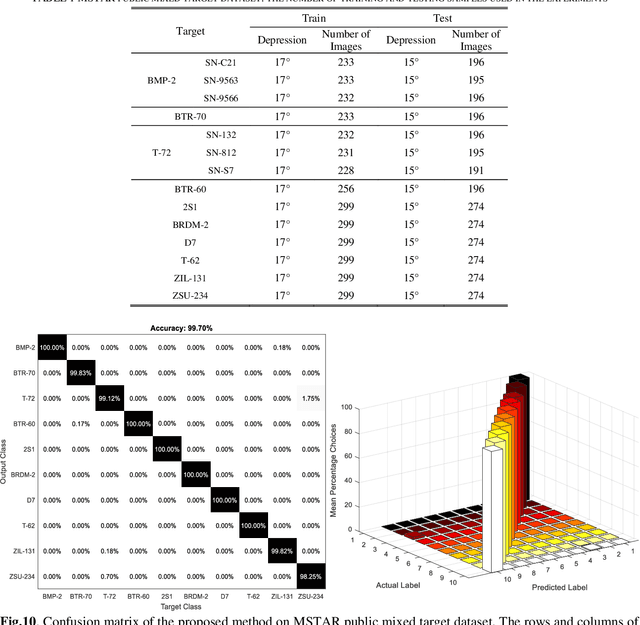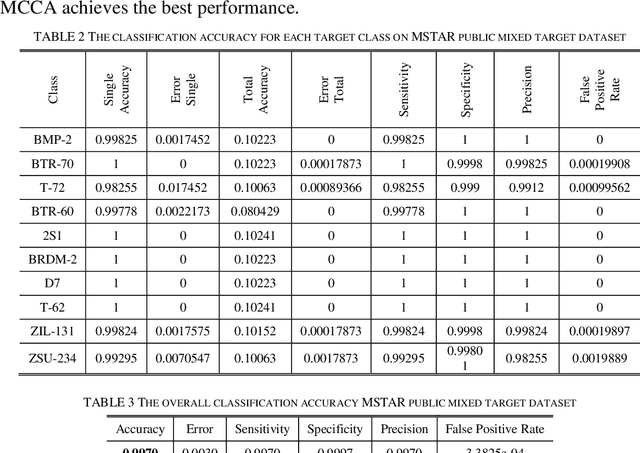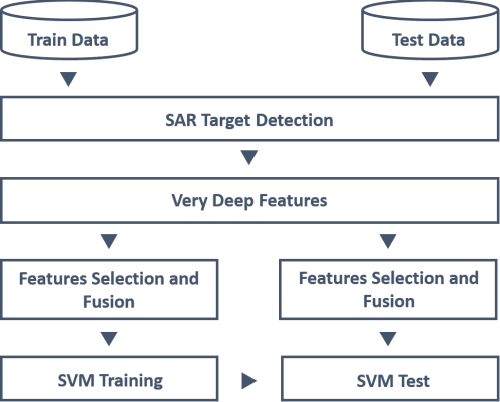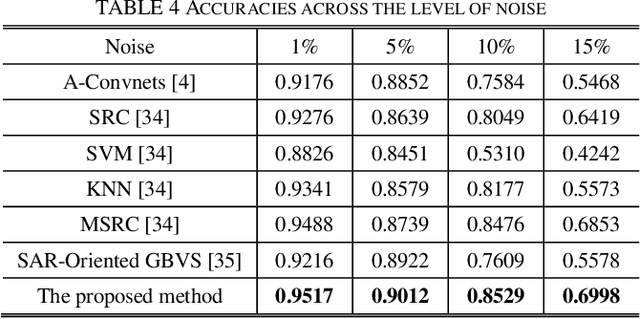Moussa Amrani
New SAR target recognition based on YOLO and very deep multi-canonical correlation analysis
Oct 28, 2021



Abstract:Synthetic Aperture Radar (SAR) images are prone to be contaminated by noise, which makes it very difficult to perform target recognition in SAR images. Inspired by great success of very deep convolutional neural networks (CNNs), this paper proposes a robust feature extraction method for SAR image target classification by adaptively fusing effective features from different CNN layers. First, YOLOv4 network is fine-tuned to detect the targets from the respective MF SAR target images. Second, a very deep CNN is trained from scratch on the moving and stationary target acquisition and recognition (MSTAR) database by using small filters throughout the whole net to reduce the speckle noise. Besides, using small-size convolution filters decreases the number of parameters in each layer and, therefore, reduces computation cost as the CNN goes deeper. The resulting CNN model is capable of extracting very deep features from the target images without performing any noise filtering or pre-processing techniques. Third, our approach proposes to use the multi-canonical correlation analysis (MCCA) to adaptively learn CNN features from different layers such that the resulting representations are highly linearly correlated and therefore can achieve better classification accuracy even if a simple linear support vector machine is used. Experimental results on the MSTAR dataset demonstrate that the proposed method outperforms the state-of-the-art methods.
ML + FV = $\heartsuit$? A Survey on the Application of Machine Learning to Formal Verification
Jun 12, 2018


Abstract:Formal Verification (FV) and Machine Learning (ML) can seem incompatible due to their opposite mathematical foundations and their use in real-life problems: FV mostly relies on discrete mathematics and aims at ensuring correctness; ML often relies on probabilistic models and consists of learning patterns from training data. In this paper, we postulate that they are complementary in practice, and explore how ML helps FV in its classical approaches: static analysis, model-checking, theorem-proving, and SAT solving. We draw a landscape of the current practice and catalog some of the most prominent uses of ML inside FV tools, thus offering a new perspective on FV techniques that can help researchers and practitioners to better locate the possible synergies. We discuss lessons learned from our work, point to possible improvements and offer visions for the future of the domain in the light of the science of software and systems modeling.
 Add to Chrome
Add to Chrome Add to Firefox
Add to Firefox Add to Edge
Add to Edge